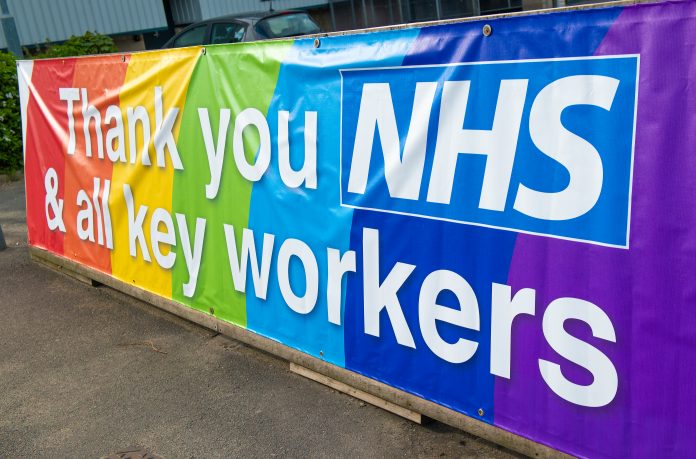Mark Frankish, Data Scientist, SAS UK, discusses how AI and analytics can help to streamline the workload of doctors and medical professionals in the NHS and what needs to be done to implement this technology successfully
COVID-19 has put a strain on all of us in society, none more so than those working tirelessly on the NHS frontline. Yet, and this is testament to all those working in health service, it has stood firm, saving lives in the process. The heroics being performed and the energy-sapping efforts we are all hearing about does lead to the inevitable question: what can we do to ease the strain on medical professionals in the NHS?
Part of the answer lies in technology to help make the system more efficient. Deploying the latest Artificial Intelligence (AI) and analytics, the NHS can create a protective buffer for its overstretched staff. Of course, this isn’t something that can be done overnight.
A drain on resources
While the NHS 111 advice line has saved over 12 million unnecessary A&E visits over the last nine years, there are still thousands of avoidable cases coming into A&E each year, according to the NHS Southend Clinical Commissioning Group. Between April and August last year, there were more than 3,500 people who used the service and left without needing any treatment or medical investigation.
This is a chronic drain on NHS time and resources; one that we do not have the luxury to afford. While NHS 111 is an essential service, unless everyone is filling out their details on the website it requires a huge level of human input that could be allocated elsewhere. As an alternative to this, early ‘virtual hospital’ trials in Wolverhampton point to the direction that the NHS must go in.
By deploying AI and chatbots the hospital has been able to filter out low-priority health queries, allowing their staff and doctors to focus on care pathways for the most critical patients. This is an efficient allocation of resources that the NHS should strive for as a unit. Yet to achieve this the NHS needs better access to its wide network of data.
Unlocking data’s potential
Innovations, such as those seen recently in Wolverhampton, are driven by data – and when it comes to data, the more you have access to the better. However, the issue is not that the NHS lacks data. Indeed, it has data in abundance. What the NHS needs is more and better access to this data, so it can be used to create valuable insights for clinicians.
In February 2020 alone, there were an estimated 25 million GP appointments for the NHS. This is 25 million unique opportunities to compile data. However, the NHS also employs over 1.5 million people and they don’t all record information in the same way: it ranges from handwritten doctor’s notes to digital records.
All this data can be useful to clinicians and patients alike. Let’s apply this to the example of virtual hospitals in Wolverhampton. For the AI and chatbots to work effectively, they need as much information about individual patients as possible. Inputting insight such as a patient’s medical history or any underlying conditions into the algorithms is essential. With this information, it’s possible to prioritise patients in urgent need of care, while filtering out those non-essential cases.
However, we can go further than simply using the technology as a preventative measure. Advanced algorithms can also be used to drive support for diagnosis and treatment, helping clinicians decide the best approach for treating patients. To realise this potential, however, the NHS would greatly benefit from integrating their data.
Enriched with all the data and information available, the algorithm-powered chatbots and AI can make informed decisions. This will quickly help to filter outpatients who are not in need of treatment or medical investigation. Doctors and clinicians can then focus their attention on those most in need, doing what they do best: saving lives.
Some practical advice
To make data accessible across the entirety of the NHS, it’s necessary for individual hospitals to create and use a single centralised system. Clinical data warehouses, which are privacy protected, can be created using advanced analytics. This can act as a central store of data for practitioners across the country.
We aren’t just referring to typical data you might find in a database or spreadsheet. It covers all unstructured data too – images, video, recordings and text. To ensure that every piece of data is captured – even those handwritten scribbles buried in a filing cabinet from the 1950s – these notes need to be digitised. This, of course, can be done manually. However, this would require a significant amount of human input which is not necessary. Instead, image recognition solutions, powered by AI, can make these insights accessible for clinical use. Text analytics can then be used to analyse this and other written text. Recordings can also be analysed using natural language processing, which is another branch of AI.
As ever, when it comes to AI and analytics, input equals output. To make AI-driven hospital appointments and diagnoses effective, the NHS needs to harness all of its data and make it universally accessible to its network of clinicians. Image recognition solutions and clinical data warehouses are key to this. To be clear, data doesn’t save lives, doctors do. However, a streamlined data strategy can make doing their job more effective by enabling faster, better decisions. And this has never been more apparent than during the COVID-19 pandemic, given the daily pressure to make vitally important decisions.











